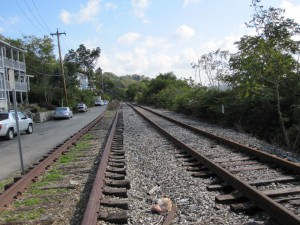
The Oasis Line along Eastern Avenue in Cincinnati, one of two potential routes for the Eastern Corridor project.
The Cincinnati Enquirer has been covering a divide between Cincinnati and Hamilton County positions on the Eastern Corridor project. The Enquirer article headlined, “City, suburbs feud over rail†provided only cursory coverage to an issue that reaffirms the need for coordinated transit planning in the Cincinnati region.
The Eastern Corridor project, a project over a decade in the making, includes proposals for road widening and highway expansion (extending Red Bank Expressway along Beachmont Ave to I-275) and a commuter rail service from the Montgomery Inn Boathouse to Milford. The project has had a storied history of challenges including opposition from citizen groups and the local Sierra Club because it proposes an eight lane bridge over the Little Miami River. It was put on hold in 2006 but was recently revived in early 2009 with hopes from OKI that stimulus money could push the project forward. The project is still in the feasibility study stages.
Meanwhile, the City of Cincinnati moved forward with the proposed streetcar and since has been focused on funding the project to spur economic development growth in the urban core.  With 90% of the funding secured, the streetcar is a very real and “shovel-ready†project that will start construction later this year.  Both projects would have vied for TIGER II funds if the City would have signed-off on the Eastern Corridor Project. Cincinnati Vice-Mayor Roxanne Qualls highlighted the City’s position in a recent blog post as to why the city cannot support a TIGER II grant application for the Eastern Corridor project.
This recent dispute highlights the need for regional collaboration for a unified transportation vision for the entire region. Since the failing of the Metro Moves ballot initiative in 2002, gasoline prices have increased 194%. This, coupled with the fact that in 2003 almost 20% of Cincinnati area residents’ income went towards transportation costs alone, a percentage that surely increased with rising gas prices, shows that the time to invest in a regional vision of mass transit is well past due.
John Yung is an Urban Planner and advocate for pedestrian-friendly planning.  Currently the Zoning Administrator of the City of Bellevue, he specializes in Land Use Planning, form-based Codes, floodplain management and urban forestry.  Mr. Yung is currently pursuing a Masters Degree from the University of Cincinnati’s School of Planning.

